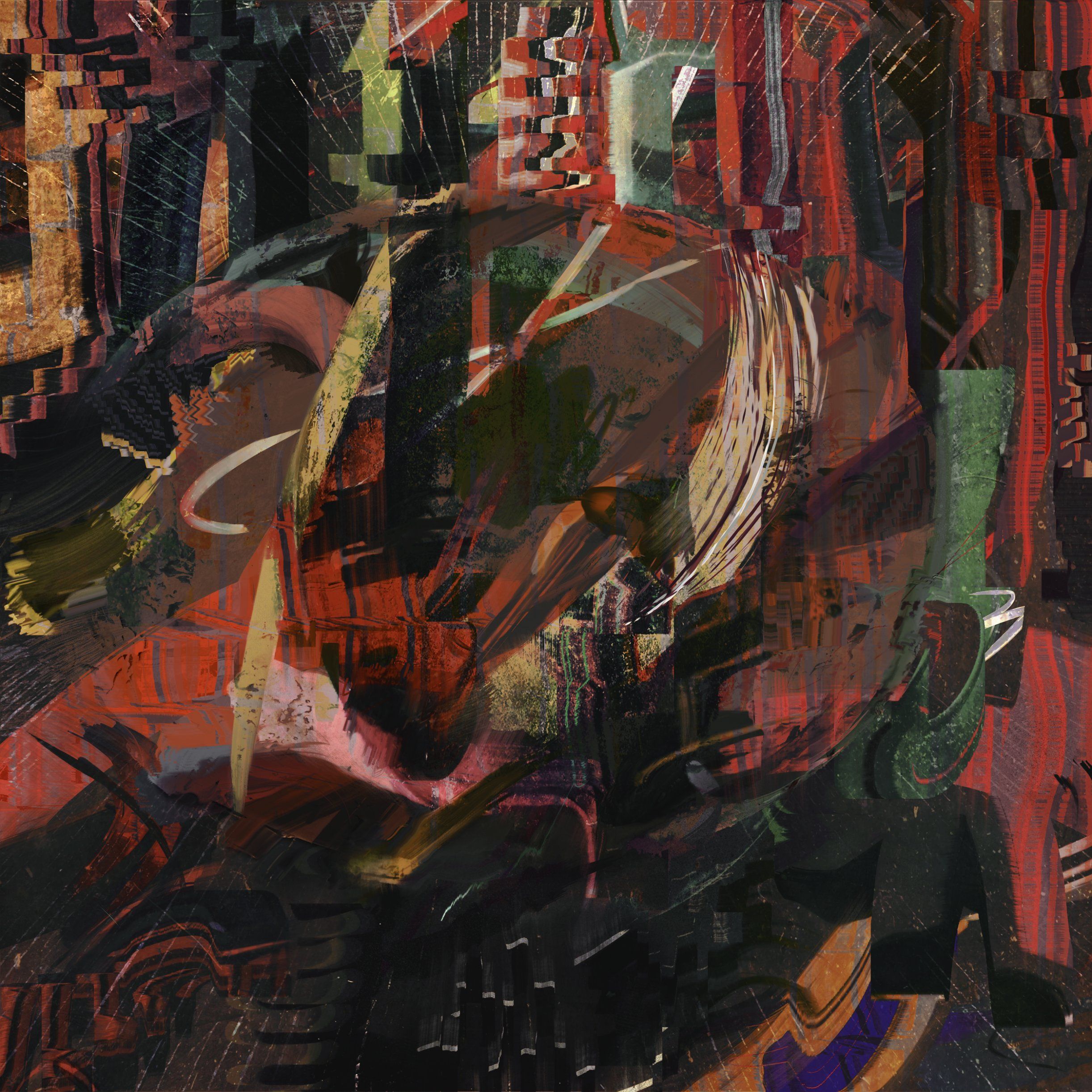
James (Jim) Kenney has an incredible wealth of creative experience. He studied fine art in the 1980s, transitioned to design and film during the rise of digital painting, and taught for thirteen years at the Californian College of the Arts as an Associate Professor.
Jim is now working as the Creative Director of InterStitch Films, and returning to his fine art roots with Procreate. He's also recently been announced as a winner with one of his Procreate artworks in the Professional Fine Art category of the upcoming Fall issue of the Creative Quarterly journal.
We had the chance to ask him a few questions about his extensive career, and learn more about his chaotic compositions.
Hi Jim! Where are you from?
I am originally from Peoria, Illinois, USA, a place from which I am proud to have escaped. I have been based in California for almost 25 years – more recently in the woods on a Sierra mountain, where I work mostly independently.
How long have you been painting?
I drew as a child and continued through a degree in painting and drawing, but I left fine art to earn a living in design and then film. In design and film, I had built decades of digital craft, but I had given up painting and drawing for 25 years.
When I saw the Apple Pencil on an iPad Pro, I exclaimed, "This is what I have been waiting for", because I could finally paint and draw digitally, and yet also by hand directly on the screen. Now I am as obsessed with Procreate as when I was drawing by myself in my room as a teenager.

Can you tell us a little about your work and your skillset?
When I was in painting school, my instructors identified how tight I was in my work. I was not born with the skill of drawing instinctively from nature, but I think that I have a good eye, which led me to teaching.
In art or design production, I consider myself as a “selector.” I stab the canvas and choose the mess. I am working toward achieving a balance between the intent of my visual knowledge and the unpredictability of expressive gestures. Procreate is perfect for that, because it allows me to make arbitrary marks that I can choose to undo or keep. Much of my digital work seeks the honesty of analog making. Procreate is the closest my hand can get into the pixels.
How do your artworks evolve? Do you start with sketches, blocking out colours, or do you have a different method?
I never sketch. I find the work in its making. Most of my work builds from arbitrary marks, either selected or undone – or from wayward intersections. The finished work does not attempt to hide most of that process. It is a patched beauty.
Has your art style changed much over time?
I am more surprised by how little it has changed. Since childhood I have attacked the void of a page with rash gestures from which I pull out aspects of representation – like finding animals in clouds. Because I cannot draw naturally, I find more truth in picking accidents. In design and film, there is pressure to address content. My fine art is more to explore the mysteries of form and beauty.

Are there any overarching themes or messages you try to work into your art?
To me, there seems to be a contemporary pressure to simplify – perhaps because minimalism is a more easily digestible fantasy. I have moved against that toward complexity and mess, which for me is more reflective of actual life. A lot of my work is about trying to patch something back together.
How has Procreate changed or affected the way you work as an artist?
I use Procreate for many workflows that I would have previously done on a desktop with a mouse. Specifically, in addition to fine art, I use it for graphic design (though I wish it had typography), and I edit and retouch photography extensively within the app.
Do you have a favourite tool or feature in Procreate?
I love the Wet Mix in brushes, for the surprise in how it drags colours around.
Are there any features you’d be excited to see implemented in the future?
I’d love to see an ability to add feather to a selection. Right now I have to use a workaround, but it's a little slow and takes up a layer - which can be valuable in high-resolution artworks.
James' feathering workaround:
- Create a selection.- Create a new layer with the selection still active.- Fill the selection with a solid colour.- Blur the fill.- Select blurred content (Open Layers, tap the layer, and tap Select)- Hide that layer.- Change to target layer, or make a Layer Mask from selection.
Do you have any tips to offer to aspiring artists?
Make consistently for your own bliss. Don’t criticize yourself. Persevere.

You can find more of James' work and learn about his latest projects through his website.